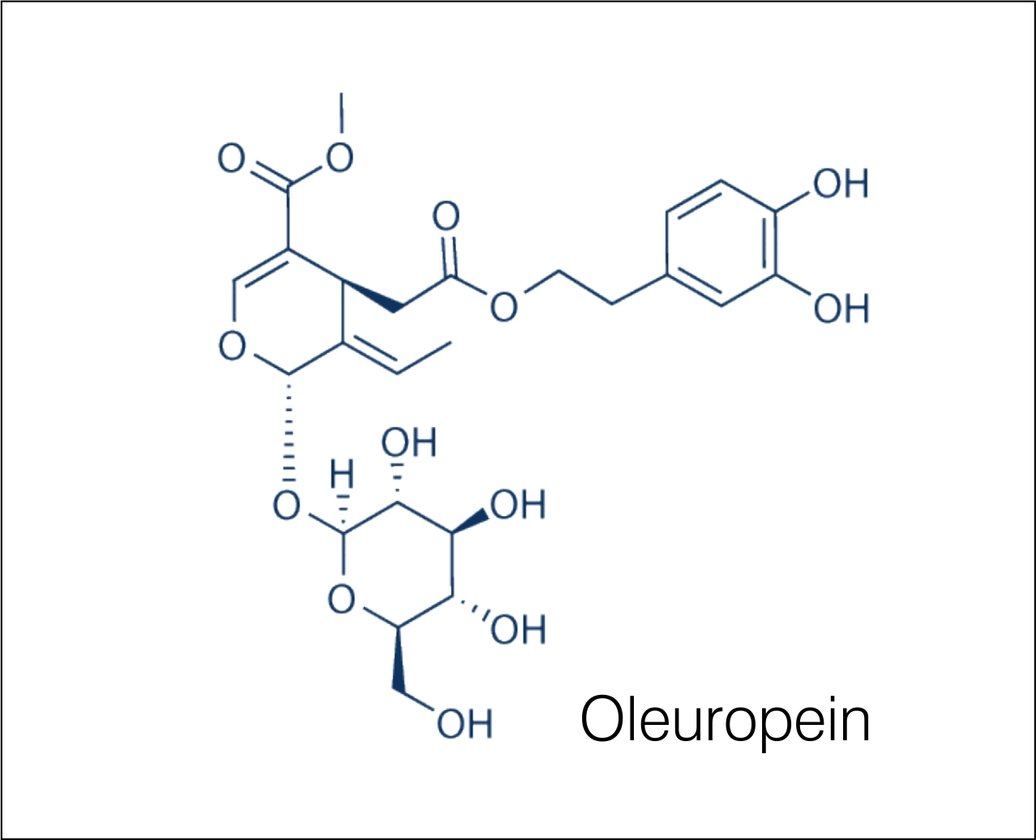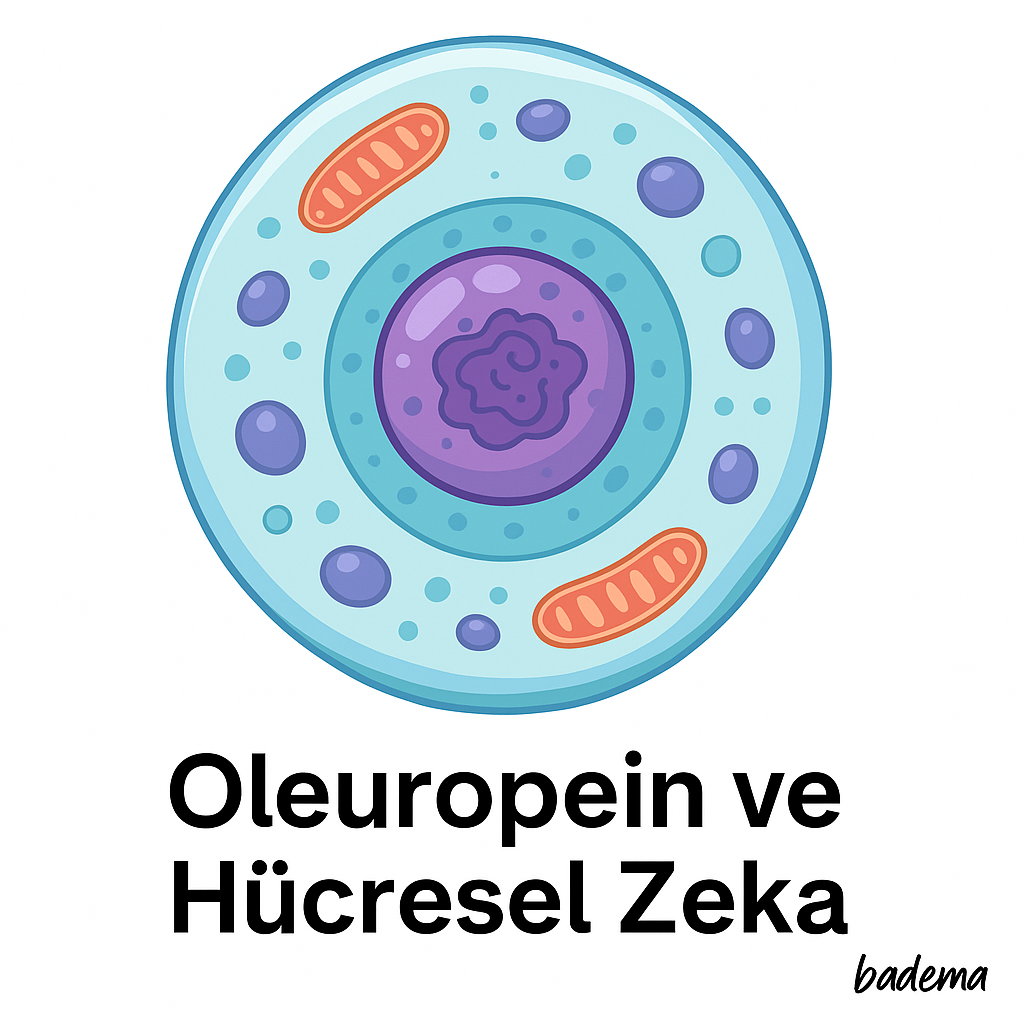
What is Oleuropein and How is it Used?
What is Oleuropein and What Does It Do?
Oleuropein (Oleropin in Turkish), one of the most potent, most dominant, and most potent phenolic bioactive compounds circulating in the veins of olive trees, is one of the most powerful antioxidants ever discovered. (ORAC - Value Free Radical Scavenging Capacity) 4,000,000 qmol/100 g). It is found in the roots, trunk, fruit, and leaves of olive trees. It is a defense mechanism developed by the tree to defend itself against pests and diseases. With its antifungal, antibacterial, antiviral, and anti-inflammatory (infection) properties, it is thought to be responsible for olive trees' thousands of years of life and continued reproduction. Oleuropein provides powerful support for the antioxidant defense system. Antioxidants are the most fundamental defense mechanisms that protect the body against various chronic diseases and signs of premature aging. By preventing oxidative stress, it can protect against cancer, high cholesterol, arteriosclerosis, and cardiovascular disease.

Key Benefits / Interactions
Oleuropein, the primary active ingredient in olive leaf extract, is effective in scavenging free radicals generated by the body's basic activities and external factors. The accumulation of free radicals within cells is considered the primary cause of cell death. Because free radicals cause oxidative stress in the body, oleuropein helps reduce oxidative stress. It is effective in reducing high LDL cholesterol levels that develop due to oxidation. It lowers cholesterol.
However, it is more atherosclerotic. In other words, it prevents macrophage-induced plaque formation within the arteries. It protects against atherosclerosis.
The relationship between insufficient or absent insulin secretion by the pancreas and oleuropein has been investigated. Insufficient insulin levels are thought to affect glucose metabolism and lower blood sugar (type 2 diabetes).
In clinical studies conducted on various tumor samples, it has effects in inhibiting tumors and reducing the likelihood of metastasis, especially in breast, prostate and colon.
Things to Know
It is not a medicine!
Individuals who are allergic to olives and olive products cannot use it.
Used for:
Antioxidant and Anti-infection
Aesthetics-Beauty
Cardiovascular / Cardiovascular health
Insulin sensitivity / Type 2 diabetes
General immune system supporter
wound healing
Things to Pay Attention to:
It is possible to have an allergic reaction to olives and olive products. Those with a known olive product allergy should not use olives.
How is Oleuropein Used and What Are Its Uses?
The permitted daily intake of olive leaf oleuropein extract in Turkey has been determined by the relevant ministry as 345 mg. Adequate bioavailability is related to the % oleuropein content of the extract. Extracts with a higher % oleuropein content offer greater utilization. Specifically, for lowering LDL cholesterol, a minimum of 10 mg of oleuropein should be used daily.
1. Oleuropein Sources:
The primary source of oleuropein is the leaves of olive trees. They contain higher levels of oleuropein than the roots, trunks, and fruit. Oleuropein is also found in olive oil and olive fruit. It begins to decline as the fruit ripens (black olives). Oleuropein is a phenolic compound that rapidly oxidizes and dissolves upon contact with water and air. Therefore, the oleuropein content of olive oil is quite low.
2. Cardiovascular Health
2-1 Heart Tissue: Adverse changes in LV diastolic stiffness and fibrosis were abolished in mice treated with 20.7 mg/kg oleuropein and an obese diet. Consequently, it may be used to prevent cardiovascular risks associated with adverse nutritional conditions.
2-2 Hypertension: 1000 mg of 19.9% oleuropein extract daily for 8 weeks reduced body pressure (-11.5+/-8.5) and heart pressure (-4.8+/-5.5) to a degree comparable to the active control of 25 mg captopril (a hypertension medication). When administered to individuals with normal blood pressure, there was no change in blood pressure levels. Oleuropein is not a blood pressure lowerer, but a blood pressure stabilizer.
2-3 Cholesterol and Triglycerides: Studies conducted on mice with vascular occlusion and bad cholesterol indicated that oleropine reduces bad cholesterol. It is effective in preventing the increase in cholesterol oxidized by the effect of free radicals in the blood.
2-4 Atherosclerosis: Oleuropein reduces the risk of atherosclerosis by preventing macrophage-induced plaque formation through its anti-LDL oxidation effect.
3. Inflammation and the Immune System
3-1 Cold and Flu Interactions: Regular consumption of 200 mg/day of oleuropein has been shown to have virucidal activity against influenza A virus (PR8). It is important to use a standardized extract for this effect.
3-2 Bacterial Interactions: Oleuropein, when standardized, has been found to be active against Campylobacter jejuni, Helicobacter pylori, and Staphylococcus aureus (including methicillin-resistant S. aureus) in an Australian study. Helicobacter pylori is the primary cause of many types of ulcers. In the presence of this bacterium, ulcers sometimes do not develop in individuals, but gastritis does.
3-4 Virological Interactions: It has been found to be antiviral against viruses including Coxsackievirus A21. It has demonstrated virucidal (killing) effects against viruses including paraffinoproteinase viruses such as Newcastle virus, influenza A virus, and Sindbis virus when given within 8 hours of infection.
4. Oxidation Effect
Oxidation is the harmful effect on cells of oxidizing, unstable electron-containing molecules called "free radicals," which the body produces through its normal activities or absorbs from environmental conditions. Because these molecules lose electrons, they experience an unbearable hunger and attempt to transfer electrons from healthy molecules. For greater visual clarity, it can be compared to the rusting that occurs on metal surfaces. After a while, rusting metal surfaces lose their physical integrity—that is, they lose atoms. This causes oxidation (oxidative stress) in your body.
Your cells are exposed to an average of 10,000 free radical attacks daily. This process is managed by your body's antioxidant defenses. Harmful free radicals are destroyed or removed from the body. Some studies show that the antioxidant defense system reaches its maximum strength starting at age 25 and begins to weaken after that age. Oleuropein has an Orac Value of 4,000,000 qmol/100g for its free radical-scavenging capacity.
Oxidative stress is the inability to break the free radical chain, resulting in an increase in the free radical population in tissues. In other words, all the micronutrients and beneficial building blocks that cells need are rapidly being turned into waste.
Oleuropein is one of the most powerful antioxidants known. It can prevent cell death and DNA damage by scavenging free radicals in the body.
5. Blood Sugar and Type 2 Diabetes
Supplementation with 51.1 mg oleuropein/oleoprene for 6 weeks resulted in a 6% response in a tolerance test, a 15% increase in glucose AUC, and a 14% decrease in insulin secretion. 51.1 mg oleuropein administered for 6 weeks improved the responsiveness of pancreatic beta cells by 28%.
6. Skin/Beauty/Wound Healing
In a study conducted in Italy, oleuropein was recommended for rapid healing of burns.
In a study conducted on experimental animals, it was reported that wounds treated with a liquid mixture containing olerapine solution healed faster. Olerapine is effective in wound healing. The leaves and fruits of Olea europaea L. (olive) have been used externally as an emollient for the healing of skin ulcers and festering wounds. The wound healing activities of n-hexane and aqueous extracts prepared from dried olive leaves were evaluated using linear incision and circular excision in vivo wound models in comparison with the reference ointment Madecassol® (Bayer, Istanbul, Turkey). The animal group treated with the aqueous extract showed increased contraction at excision (87.1%) and a significant increase in wound tensile strength (34.8%) in incision models compared to the other groups. Additionally, antioxidant activity assay showed that the aqueous extract had higher sweeping ability than the n-hexane extract. According to the experimental data, the aqueous extract of O. europaea leaves exhibited wound healing activity. According to high performance liquid chromatography analysis of the aqueous extract, Secoiridoid “ oleuropein ” (4.6059%) was determined as the main active compound.
Oleuropein application blocks the harmful effects of UV(B) radiation from the sun. It delays skin aging. Its anti-aging activity has been reported as satisfactory. It prevents the effects of UV(B) radiation from the sun, such as damaging skin elasticity and causing hardening.
7. Cancer
Oleuropein's antioxidant properties inhibit the activity of certain carcinogenic substances that develop due to oxidative damage. Regular oleuropein use reduces oxidative stress in the body by 49% to 51%.
Oleuropein has noted anti-proliferative effects on glioblastoma (a malignant central nervous system tumor) cells.
It demonstrated antiproliferative and pro-apoptotic effects in colon cancer cells (HT29 and Coco). This makes oleuropein an excellent choice for cancerous or healthy colon health.
Oleuropein has shown anti-proliferative effects on lung tumors.
It has been shown to be effective in regression of breast and prostate cancer tumors and reducing the possibility of metastasis.
It has been studied in bladder tumor cell lines and has shown positive effects as a tumor suppressor.
8. Side Effects
The maximum daily dose of oleuropein has been determined to be 345 mg/day. No toxicity or side effects have been observed in the human body with long-term use or dose accumulation. [9] It should not be used in pregnant women or in individuals allergic to olives or olive products.
References
Major phenolic compounds in olive oil: metabolism and health effects
Olive oils high in phenolic compounds modulate oxidative/antioxidative status in men
Antiatherogenic components of olive oil
Oleuropein, a non-toxic olive iridoid, is an anti-tumor agent and cytoskeleton disruptor
Bile acids induce energy expenditure by promoting intracellular thyroid hormone activation
The health effects of oleuropein, one of the major phenolic compounds of olives, Olea europaea L.
Antiproliferative effect of oleuropein in prostate cell lines
Antimicrobial activity of commercial Olea europaea (olive) leaf extract
In vitro antimicrobial activity of olive leaves
Antiviral activity of calcium elenolate on parainfluenza infection of hamsters
Biological effects of hydroxytyrosol, a polyphenol from olive oil endowed with antioxidant activity
Antioxidant and other biological activities of phenols from olives and olive oil
Efficacy of oleuropein against UVB irradiation: preliminary evaluation
Olea europaea leaf extract alters microRNA expression in human glioblastoma cells
Evaluation of Effect of Oleuropein on Skin Wound Healing in Aged Male Balb/c Mice






